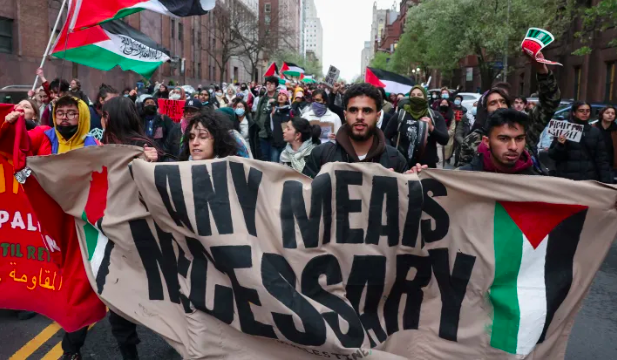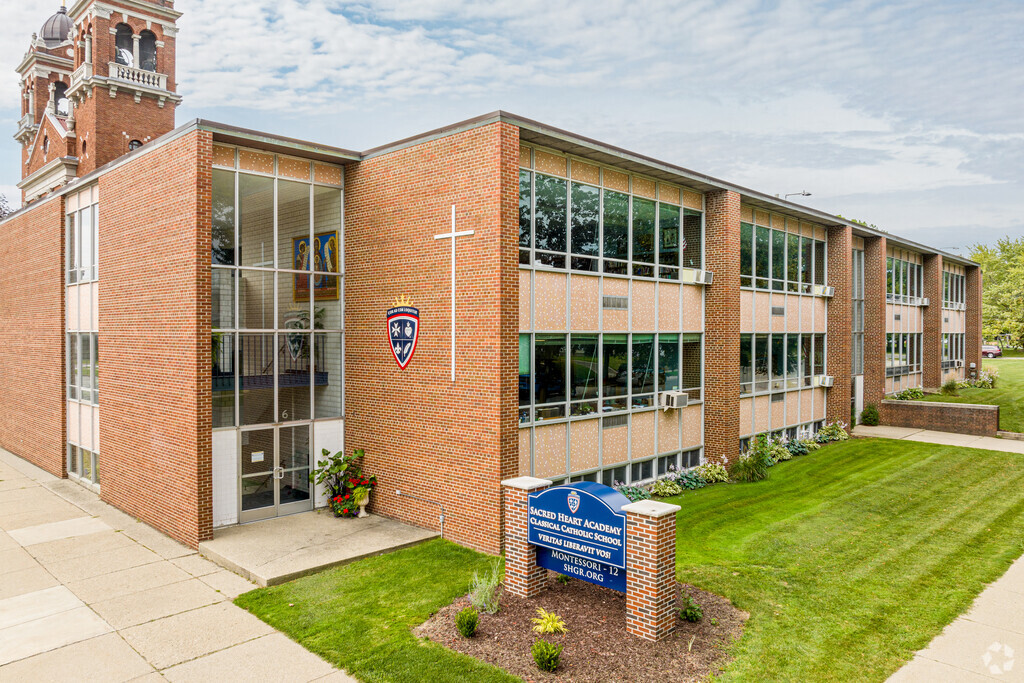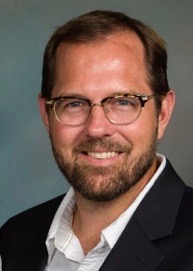This Cornerstone Forum series, in which this article is the first, is published under RFI’s Freedom of Religious Institutions in Society (FORIS) Project. FORIS is a three-year initiative funded by the John Templeton Foundation to clarify the meaning and scope of institutional religious freedom, examine how it is faring globally, and explore why it is worthy of public concern. This series aims to address the third project focus — i.e., exploring why institutional religious freedom is worthy of public concern.

Faith-based organizations and programs can have transformative effects on even the most challenging and volatile prison settings in America. In this and many other contexts, a firm commitment to religious freedom can contribute to positive and lasting change in the U.S. criminal justice system.
Prosocial behaviors are those intended to help other people. Prosocial behavior is characterized by a concern for the rights, feelings, and welfare of other people. Behaviors that can be described as prosocial include not just feeling empathy and concern for others, but actually behaving in ways that help or benefit other people.[1] As it turns out, the freedom to participate in religious practices and activities can foster the development of and integration into personal networks that provide both social and emotional support.[2] When such personal networks overlap with other networks, they not only constrain illegal behavior, but can also protect one from the effects of living in disadvantaged communities.[3] In other words, an individual’s integration into a community-based religious network actually weakens the effects of other factors that might otherwise promote deviant behavior. Thus, religious networks have been found to buffer or shield people from the effects of harmful influences.[4] Moreover, these networks may encourage appropriate behavior as well as emphasize concern for others’ welfare. Such processes can contribute to the acquisition of positive attributes that give those affiliated with religious networks a greater sense of empathy toward others, which in turn makes them less likely to commit acts that harm others.
Recent research in an emerging sub-field labeled “positive criminology”[5] suggests that positive and restorative approaches – including those that foster social connectedness and support, service to others, spiritual experience, personal integrity, and identity change – may be more effective than the prevailing punitive tactics.[6] Consistent with traditional and contemporary restorative justice practices, these approaches seek to develop active responsibility on the part of individuals who have been living a lifestyle of irresponsibility.[7] From this perspective, correctional practices should be explicitly designed to promote virtue.[8] Thus, the goal of punishment is not to inflict pain or exact revenge but rather to reconstruct and make better.[9] Although this is rare in current correctional systems, the Louisiana State Penitentiary, located in Angola, Louisiana, provides a concrete example. Once known as one of the most violent and corrupt prisons in America, Angola is now known for its many inmate-led congregations and a fully operational seminary.
Housing over 6,300 inmates in five separate complexes spread over 18,000 acres of a working prison farm. Cellblock and dormitory units are still called “camps” at Angola, a remnant of the traditional assignment of slaves to “work camps” across various locations of the property, which is itself a former slave plantation.[10] The property first became known as “Angola” because it was this region of Africa that supplied its slaves. Roughly 75% of inmates currently serving time at Angola are serving life sentences.[11] A “life sentence” in Louisiana means “natural life,” expiring only upon the inmate’s death.[12] The average sentence for “non-lifers” at Angola in 2012 was 92.7 years.
In 1995, Burl Cain was appointed the new warden at Angola. Mindful of the dismal history and challenge of this under-resourced and notorious prison, Cain knew it was necessary to do something dramatically different to put Angola on a more humane trajectory. His idea was a novel one: establish a Bible College as a means of providing educational programs for prisoners, thereby giving them another chance to make something positive out of their life. Cain was optimistic that a prison-based seminary could successfully train prisoners to become ministers who over time would become effective change agents in the prison; ultimately replacing a culture of violence and corruption with a culture that was redemptive, hopeful, and personally transformative.
In 2012, I led a research team in launching a major five-year study of prisoners at Angola, with a focus on those participating in the Bible college. Previous research on religion within prisons had focused largely on faith-based programs administered by faith-motivated volunteers and generally confirms that these programs can increase prosocial behavior inside of prison and even reduce recidivism following release from prison.[13] However, very little was known about what happens when inmates form and lead their own religious groups, interpret theology from inside of prison, and practice their faith communally inside the cellblocks. Over a period of five years, we analyzed survey data from 2,200 inmates at the Louisiana State Penitentiary, and conducted more than 100 life-history interviews of inmates and staff. We found significant linkages between participation in the prison seminary and inmate-led churches on disciplinary convictions, crime desistance, rehabilitation, and prosocial behavior within the prison environment. Most importantly, the research points to the central role of inmate-led efforts to bring about these salutary findings.[14]
Inmate ministers establish their own churches and serve in lay-ministry capacities in hospice, cellblock visitation, tier ministry, officiating inmate funerals, and through tithing with “care packages” for indigent prisoners. Despite the fact they are serving life sentences without the possibility of parole, inmate ministers are able to find meaning and purpose for their lives. The inmate ministers assist others in finding purpose and hope, thereby providing them with the human grace and dignity they may have thought they lost or perhaps never had.
The freedom to embrace religion provides an opportunity for prisoners to choose a better self, transform their lives, come to care about others, and display their humanity on a daily basis. Several themes of positive criminology emerge from inmate narratives: (a) the importance of respectful treatment of inmates by correctional administrations, (b) the value of building trusting relationships for prosocial modeling and improved self-perception, (c) repairing harm through faith-based intervention, and (d) spiritual practice as a blueprint for positive self-identity and social integration among prisoners.[15]
Though research on how incarcerated offenders can help other prisoners change is rare, the Field Ministry program within the Texas Department of Criminal Justice is one such current example. The program enlists inmates who have graduated from a prison-based seminary to work as “Field Ministers,” serving other inmates in various capacities.[16] Colleagues and I have recently examined whether inmate exposure to Field Ministers is inversely related to antisocial factors and positively to prosocial ones at three maximum-security prisons where the Field Ministry program operates. Preliminary results ind
icate inmates exposed to Field Ministers more frequently and for a longer period tended to report lower levels of criminological risk factors and aggressiveness, and higher levels of virtues, purpose, and religiosity. We find that prisoners who are the beneficiaries of the inmate-led Field Ministry help other prisoners make positive and prosocial changes. We conclude that inmate ministers play an important role in fostering virtuous behavior[17] and achieving the goal of offender rehabilitation.[18] Indeed, some prisoners should be viewed as potential assets waiting to be reformed with the help of other offenders.[19]
A promising line of research is beginning to focus on religious groups indigenous to the cellblocks – what we are calling Offender-led Religious Movements (ORMs). ORMs may provide an alternative moral framework and a set of embodied practices that emphasize virtue and character development. This approach to rehabilitation and reform holds significant potential to transform the character of not only individual prisoners, but particular cellblocks or housing units, and possibly entire correctional facilities. Though nearly invisible to scholars, ORMs may provide rich insight on how virtue and character is developed through inmate-led religious groups.
Today there is widespread consensus on the need for criminal justice reform. Research in the sub-field of positive criminology suggests that positive and restorative approaches – including those that cultivate social connectedness and support, service to others, spiritual experience, personal integrity, and identity change – may well be more effective than traditional approaches to punishment.[20] Consistent with restorative justice practices, ORMs seek to develop active responsibility on the part of individuals who previously exhibited a lifestyle of irresponsibility.[21]
Should ORMs continue to be found to enhance rehabilitation, they would seem to hold significant potential to foster safer and more cost-effective prisons. Policy makers and practitioners should have access to rigorous research which evaluates the value of ORMs in addressing topics like rehabilitation, drug treatment, educational and vocational programs, prisoner reentry, and criminal justice reform more broadly.
An almost entirely unknown, yet potentially transformative, dimension of institutional religious freedom encompasses the freedom of prisoners to build and sustain their own ministries inside of prison. Such ministries respect human dignity, and evidence suggests they can also dramatically improve conditions within prison while the reducing recidivism rate of those who have been released. Elected officials, corrections administrators, criminal justice scholars, and religious leaders should take note.
End Notes
[1] C. D. Batson (2012). “A History of Prosocial Behavior Research: C. Daniel Batson,” Chapter 12, Handbook of the History of Social Psychology. A. W. Kruglanski & Wolfgang Stoebe (Eds).
[2] Jang, S.J., & Johnson, B.R (2004). “Explaining Religious Effects on Distress Among African Americans. Journal for the Scientific Study of Religion, 43(2), 239-260; Johnson, B.R., Larson, D.B., Jang, S.J., & Li, S. (2000); “Who Escapes the Crime of Inner-Cities: Church Attendance and Religious Salience Among Disadvantaged Youth,” Justice Quarterly, 17: 701-715; Johnson, B.R., Jang, S.J., Larson, D.B., & Li, S. (2000). “The ‘Invisible Institution’ and Black Youth Crime: The Church as an Agency of Local Social Control,” Journal of Youth and Adolescence, 29:479-498; Putnam, R.D. and Campbell, D.E. (2010). American Grace: How Religion Divides and Unites Us. New York, NY: Simon & Schuster.
[3] Krohn, M. D., & Thornberry, T. P. (1993). Network theory: A model for understanding drug abuse among African-American and Hispanic youth. In Drug Abuse Among Minority Youth: Advances in Research and Methodology, eds. De La Rosa, M. R. and Adrados, J. R. NIDA Research Monograph 130. U.S. Department of Health and Human services.
[4] Johnson, B.R. Objective Hope – Assessing the Effectiveness of Religion and Faith-Based Organizations: A Systematic Review of the Literature, Institute for Studies of Religion (ISR Research Report), Baylor University (2006) http://www.BAYLORISR.org/publications/reports/; The Great Escape: How Religion Alters the Delinquent Behavior of High-Risk Adolescents. Institute for Studies of Religion (ISR Research Report), Baylor University (2006) http://www.BAYLORISR.org/publications/reports/.
[5] Ronel, N. and Elisha, E. (2011). “A Different Perspective: Introducing Positive Criminology.” International Journal of Offender Therapy and Comparative Criminology 55(2):305-325. http://dx.doi.org/10.1177/0306624X09357772
[6] Ronel, N. and Segev, D. (eds). 2015. Positive Criminology. New York: Routledge.
[7] Braithwaite, J. (2005). “Between Proportionality & Impunity: Confrontation, Truth, Prevention.” Criminology 43:283-305. http://dx.doi.org/10.1111/j.0011-1348.2005.00009.x; Best, D. and Aston, E. (2015). “Long-term Recovery from Addiction: Criminal Justice Involvement and Positive Criminology.” Pp. 177-193 in Positive Criminology, edited by Natti Ronel and Dana Segev. New York: Routledge.
[8] For a creative example, see Cullen, F. T., J. Sundt, and J. Wozniak, J. 2001. “The Virtuous Prison: Toward a Restorative Rehabilitation.” Pp. 265-286 in H. N. Pontell and D. Shichor (eds.), Contemporary Issues in Crime and Criminal Justice: Essays in Honor of Gilbert Geis. Upper Saddle River, NJ: Prentice Hall.
[9] Thompson, G. J. and J. B. Jenkins, J.B. (1993). Verbal Judo: The Gentle Art of Persuasion. William Morrow and Company, Inc, New York.
[10] Carleton (1971).
[11] Louisiana Department of Corrections. (2015).
[12] Nellis. (2010).
[13] Johnson (2011). More God, Less Crime: Why Faith Matters and How it Could Matter More. Conshohocken, PA: Templeton Press.
[14] Hallet, M., Hays, J., Johnson, B.R., Jang, S.J., & Duwe, G. (2016). The Angola Prison Seminary: Effects of Faith-Based Ministry on Identity Transformation, Desistence and Rehabilitation. New York: Routledge Press.
[15] Ibid.
[16] Duwe, G., Johnson, B.R., Hallett, M., Hays, J., & Jang, S.J. (2015). “Bible College Participation and Prison Misconduct: A Preliminary Analysis,” Journal of Offender Rehabilitation, 54 (5): 371-390.
[17] Jang, S.J., Johnson, B.R., Hays, J., Hallett, M., and Duwe, G. (2018). “Four Gods” in a Maximum-Security Prison: Images of God, Religiousness, and Worldviews Among Inmates,” Review of Religious Research, 60 (3): 331-365.
[18] Hallet, M., Hays, J., Johnson, B.R., Jang, S.J., & Duwe, G. (2016). The Angola Prison Seminary: Effects of Faith-Based Ministry on Identity Transformation, Desistence and Rehabilitation. New York: Routledge Press.
[19] Jang, S.J. Johnson, B.R., Hays, J., Hallett, M., and Duwe, G. (2018). “Religion and Misconduct in Angola Prison: Conversion, Congregational Participation, Religiosity, and Self-identities,” Justice Quarterly 35 (3): 412-442 (2018).
[20] Ronel N. & Elisha, E. (2011). “A Different Perspective: Introducing Positive Criminology.” International Journal of Offender Therapy and Comparative Criminology 55(2): 305-325.
[21] Braithwaite, J. (2009). Restorative Justice, pp. 497-506, in Schneider, H.J. (ed.) International Handbook of Criminology. Berlin: Walter de Gruyter.
Dr. Byron Johnson serves as Senior Fellow at the Religious Freedom Institute and a Distinguished Professor of the Social Sciences at Baylor University. He is the founding director of the Baylor Institute for Studies of Religion (ISR) as well as director of the Program on Prosocial Behavior. Professor Johnson is a leading authority on the scientific study of religion, the efficacy of faith-based organizations, and criminal justice. His most recent publications have examined the impact of faith-based programs on recidivism reduction and prisoner reentry.
All views and opinions presented in this essay are solely those of the author and publication on Cornerstone does not represent an endorsement or agreement from the Religious Freedom Institute or its leadership.
THE RFI BLOG

The Horrendous and Maddening Antisemitism in New York City

Religion, the ‘Russian World,’ and the War Against Ukraine

Religious Freedom Is Back on the UK’s Agenda

Be More Faithful, Become More Resilient: An Invitation to Religious Institutions

How Soccer Reveals Different Meanings Of ‘Secular’ In France And The US
CORNERSTONE FORUM

Public Bioethics & the Failure of Expressive Individualism

Religious Liberty in American Higher Education

Scotland’s Kate Forbes and the March of Secularism

70 Years of Religious Freedom in Sweden: Prospects and Challenges

